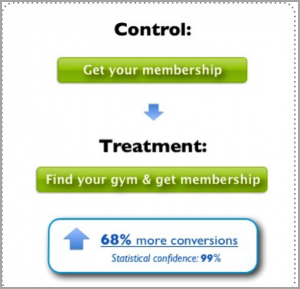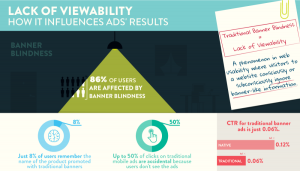Companies need diversity. It is beneficial to an organization to think with a wider breadth of perspectives, it portrays a positive image to the public eye, and gives them access to the potential revenue gains from employing people who can contribute different things to the companies they work for. Unfortunately, hiring diversity is an issue that has only recently begun to improve.
Here are ten reasons why your team needs to change their mind about diversity hiring and five ways to help you begin to do so.
1. The Biggest Reason Companies Avoid Hiring Diversity? 41% Say They’re “Too Busy”
This stat shows us one of the biggest barriers to creating a more diverse workforce. A SHRM report recently noted that 41% of managers are “too busy” to implement diversity initiatives. It may be true that managers have too much on their plates to handle on a given day, but the stat reveals just how small of a priority diversity hiring is. If managers want anything to get done about the lack of diversity on their teams, they’ll need to start fitting it into their schedule. That means making it a bigger priority.
What can you do to move diversity to the top of your list?
- Make it a team effort. Not everything needs to fall on your hands. Get insight, feedback, and support from other members of senior management. Getting commitment from them creates a way for everyone to encourage diversity throughout the organization.
- Create a committee. This could be a small group of managers or even team members that collaborate on and establish ways to create more diversity within the workplace. Remember, this group should be diverse in employee rank, race, gender, age, etc. A team that lacks diversity will not bring about the best approach to welcoming diversity.
- Use other companies. Today, diversity is a group effort in that organizations of all types and in every industry are trying to be more inclusive. While it might unveil some of your own shortcomings, looking to others who are succeeding can inspire new ideas for your own company and help you start on your own path to a more diverse workforce.
- Be honest. No one is perfect and even seasoned leaders can struggle with understanding how to implement diversity. Approaching the issue with honesty will show self-reflection and encourage others to join in on improving the problem.
2. Only 17% of Workers Support Increased Recruiting of Underrepresented Racial and Ethnic Groups
79% of these same employees also believe that their company is already diverse, while only 20% value hiring women in leadership positions, and 14% value a focus on LGBTQ awareness and sensitivity.
3. There Are Fewer CEOs Who Are Women, Than Men In Leadership Roles Who Are Named David
When a single name outnumbers an entire gender in leadership, it reveals a staggering problem. This stat reveals just how few opportunities women get in the business world, and it’s not because women can’t handle leadership. Women are capable of handling all the demands of a business — the people in charge simply aren’t giving women the opportunity to demonstrate their abilites, or are unwilling to take notice.
4. Only 3.2% of Executive and Senior Management Positions Are Held By Black Employees
33% of Black employees aspire to leadership positions, but only one-tenth of them ever make it there. Only 1% reach CEO at Fortune 500 level companies, and all of them are men. When you look at the rate that Black students complete the necessary degree to be eligible for a Fortune 500 CEO position, the appropriate number should be at least 10%.
Do you know what #hiring decisions you should be making in order to see immediate benefits? @ClearCompany
5. Racially Diverse Teams Outperform Non-diverse Teams by 35%
One of the biggest things stopping managers from implementing diversity is that they’re afraid that introducing people who may not agree with each other will hamper productivity. For those companies, we offer the above-mentioned stat. Because diverse teams outperform non-diverse ones, companies should actively try to engage with diversity initiatives as soon as possible to make sure they’re implemented, instead of trying to hamper them out of fear.
In fact, the awkwardness that comes with not understanding those around you is what makes diverse teams work so well. In a cognitive intelligence study done by MIT engineers, researchers observed that successful teams had three things in common:
- They gave one another roughly equal time to talk
- They were sensitive towards each other (even in awkward situations)
- They included more women – making them the most diverse.
In other words, having different types of people on the same team can help others look at problems more carefully while also being more innovative, creative and inclusive about their solutions.
6. 57% of Employees Think Their Companies Should Be More Diverse
Your employees want to be more productive. They want racial diversity in the workplace as much as anyone else. Working with the same people, who’ve shared their background and experiences, can be nice, but it’s becoming boring rather quickly. Without a flood of new experiences to keep them motivated and excited about the people they work with, there’s a chance they could get burnt out. So when it comes to diversity, you can be sure your employees have your back.
7. 40% of People Think There’s a Double-Standard Against Hiring Women
A recent Pew study asked respondents this question, and the stat reveals just how much bias against women in the workplace there is. Both women and men are more likely to hire men over women, and it’s likely what leads to a lack of gender diversity in the workplace, as well as problems with women in leadership positions (which we discussed in an earlier stat). Companies need to recognize this bias and implement programs which favor women in order to counteract this inherent bias in hiring.
Ways to help create a level playing field and eliminate gender bias in the workplace include:
- Establish clear criteria and qualifications for decisions.
- Make yourself accountable to others when it comes to hiring and promoting.
- Study the existing criteria you use to make management decisions.
- Be able to explain the decisions you make.
- Educate and make your employees aware of how stereotypes work.
8. Blind Applications Lead to 5x More Women
It sounds like a bit of an exaggeration to say that, but in reality, this stat demonstrates just how few women are considered in male-dominated fields. In Orchestras, when companies switched from auditions where they could see the candidate to blind auditions, the percentage of female members in the orchestra jumped from 5% to 25%. Similarly, institutions using a double-blind method to review scientific studies have similarly increased the number of women who get published in journals. This is good in adding diversity to your team while also helping your team perform overall. In a large study of more than 4,600 people, teams that welcomed more women performed better than those with fewer or no women.
9. Google & Microsoft’s Black and Latinx Tech Staff Has Gone Up Less Than 1% Since 2014.
Diversity is everyone’s issue. Being a big company means your product touches most people in America, and your staff should be made up of a similar representation as those who use your product. African Americans make up 13% of the US population, yet less than half of their share is represented in big tech. Latinx have even less than that.
10. Caucasians Received 50% More Callbacks Than African Americans
This stat makes the case for affirmative action. Arguments against Affirmative Action say that it gives minorities an unfair advantage without the skills to properly perform the tasks required of them. But in reality, initiatives like Affirmative Action are created to battle the inherent bias against African Americans in the workplace. Categorically, people of minority backgrounds are invited less often to the interviews, and when the numbers are this consistent, it makes the case for targeted diversity initiatives.
This is where a true understanding of interview bias comes into play. Individuals should be hired based on skill, experience, and performance – not by their name or ethnic background. Sadly, snap judgments are still very much a part of the interview and hiring decisions. As a manager or employer, there are things you can do to prevent bias from interfering:
- Make it a process. Create a list of questions and tasks that every candidate must answer and in the same manner and point of the assessment. Keeping consistency ensures everyone has an equal opportunity to perform well.
- Make a justified decision. Don’t decide right away on which candidate is the best choice. Look over your notes and justify why they are (or aren’t) the best fit. Write down your reasoning and make sure that it is based on more than just superficial facts. Welcoming more than one colleague into this decision will help deter bias.
11. Bilingual Employees Earn 10% More Revenue
Hiring bilingual employees, no matter what other languages they may speak is one great way to increase diversity in your company and see a few immediate benefits. If many of your employees interact with customers and clients on a regular basis, being able to speak multiple languages is a huge boon for your business. When a customer who does not speak English is interested in your product, having someone who speaks their language makes the transaction happen that much more smoothly.
12. Teams Where Men and Women are Equal Earn 41% More Revenue
Another stat that supports moving toward greater gender diversity. When companies employ more women, they’re able to take advantage of a greater wealth of perspectives. This, in turn, causes companies to have more angles from which to tackle big business issues. The results are faster solutions, more creative thinking, and higher overall revenue.
There are more than ten reasons to diversify your workforce, but we think these are the most important ones. There’s no reason to avoid creative diversity hiring initiatives any longer. Your employees want them, they’re more profitable, and they help rectify other unfair practices in hiring. Diversity benefits everyone, so it’s time for your company to start taking advantage of diversity now. Wondering where you should start? Take a step closer to promoting diversity by eliminating your hiring bias:
- Become educated and aware – Understanding how the natural bias of one person toward another can affect the hiring decision.
- Provide training – Provide your hiring team with training on diversity and how to eliminate bias from the recruiting process.
- Make your interview process consistent – This will ensure candidates are compared based on the same questions and no one has an advantage or disadvantage over another.
- Identify the language used in job descriptions – Remove any words that can be specific to one gender and replace them with titles that are easy to understand.
Removing hiring bias and developing diversity in the workplace has three simple benefits:
- It’s beneficial to your bottom line, 19% more to be exact.
- It attracts a wide array (67%) of diverse candidates.
- It sparks creative talent and promotes better decision making, 87% of the time, within the company and its leaders, as opposed to leaders that are in need of diversity.
Eliminating biases is just one place to start. ClearCompany’s applicant tracking system and employee onboarding software will help make sure your hiring is more diverse, and make new hires feel more at home at their new company.
Originally published here.
Business & Finance Articles on Business 2 Community
(85)







